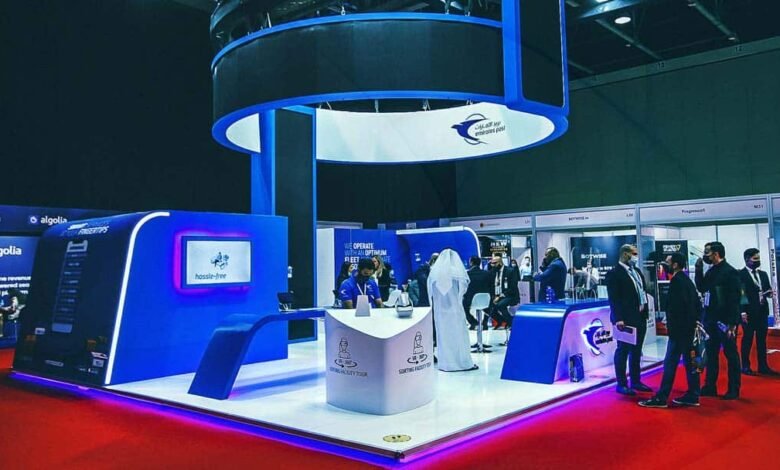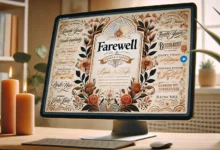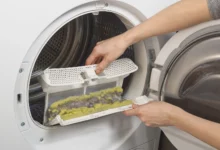Full-Service vs DIY: Key Differences in Trade Show Exhibiting

Summary: Trade shows demand tough choices. The firm offers expertise, polish, and peace of mind for a full-service approach. With a DIY approach, you get control, save costs, reduce Stress, and burden yourself with the full workload. Which route you take depends upon your budget, booth complexity, and internal resources in any case. |
Choosing between a full-service trainer and a simple DIY fare for your trade-show presence is one huge decision. It affects how much time and stress you will be able to put into it and the materials you will get for your money. For many brands, trade show services from a partner like Willwork can make a major difference, and not always just by adding cost. Below, we explore what full-service providers do vs. what DIY exhibiting demands, so you can make a more informed choice.
What “Full-Service Trade Show Services” Mean
When you work with a full-service trade show service provider, you’re engaging a partner that handles many or all of the pieces that make an exhibit/activation successful. With Willwork, for example, those services include:
- General Contracting — planning show logistics, managing themes, floor plans, traffic flow, rigging, coordinating third-party vendors, etc.
- Installation & Dismantle (I&D) — skilled labor to build and tear down booths and displays, on-site management, ensuring deadlines are met.
- Audio-Visual Services — managing AV rentals, setup, content display, and interactive tech.
- Retail / Permanent Installation (for pop-ups, stores, etc.), graphics, furniture, signage, decor, anything that helps present your brand environment.
A full-service provider integrates these, handling coordination, labor, logistics, and often budget forecasting. The goal is to let you focus on messaging, strategy, and attendee engagement, rather than worrying about when trucks arrive or whether the booth will be finished in time.
What “Do-It-Yourself Exhibiting” Looks Like
DIY exhibiting means your internal team (or external freelancers you hire) takes on many or all components of setting up your trade show presence, such as:
- Designing and building your booth or display
- Managing or hiring labor for setup and teardown
- Arranging for audio-visual equipment or renting from show vendors
- Handling shipping, storage, drayage, permitting, and venue rules
- Coordinating with the show organizer, managing deadlines
Some companies do parts of this well. But doing everything internally or managing many moving parts yourself carries the risk of oversights or higher hidden costs.
Key Differences: What You Gain & What You Trade Off
Here are the main trade-offs between full-service providers vs DIY. Depending on your priorities (budget, control, schedule, risk) one path may suit better.
| Aspect | Full-Service Provider | DIY Exhibiting |
| Time & Project Management | The provider handles much of the heavy lifting: planning, scheduling, coordinating all trade show services. This reduces last-minute firefighting. | You must allocate internal resources for many tasks: project managers, labor, vendors, etc. Risk of delays or confusion increases with complexity. |
| Expertise & Experience | Providers like Willwork bring years of specialization in general contracting, I&D, AV, etc., so they know what to expect. They foresee logistical complications. | Unless you have in-house trade show experts, you may miss subtle but important requirements: local labor rules, venue constraints, AV setup details, etc. |
| Cost Predictability | Costs are clearer when worked out in advance. Full-service providers may bundle many trade show services, reducing surprises. | DIY can sometimes seem cheaper upfront, but hidden costs (storage, shipping, overtime labor, permit fees, corrections) often add up. |
| Quality of Execution | Providers maintain consistency of build and finish through standards, dedicated labor crews, and quality control. Willwork’s Deployment of skilled labor and supervision aims to reduce errors and ensure polished installations. | You may achieve good results, but risks are higher: mismatched components, less efficient labor, more rework, or having to compromise on finish. |
| Focus & Strategic Overhead | You can focus more on what matters: messaging, brand experience, audience engagement. Less on logistics. | Much of your bandwidth will go into logistics, problem solving, coordination, allowing less time for strategic/trend-setting work. |
| Flexibility and Control | Sometimes less control over every minute detail. If you specify well, providers accommodate, but changes on the fly might be costlier. | Full control over every aspect; possible to experiment, pivot, or use unconventional materials or approaches more freely. But that comes with greater responsibility. |
| Risk & Stress | Many risks are transferred (or shared) to the provider: damage, delays, regulatory issues, labor issues. They have systems and contingencies. | You carry much of the risk. Unexpected venue issues, labor problems, AV failures, scheduling conflicts are more likely, with fewer backup options. |
When DIY Might Be a Good Fit
There are cases where DIY exhibiting makes sense, such as:
- Your shows are small, well-known, relatively simple booths with minimal infrastructure needed
- You have internal staff who have managed many shows and are familiar with what’s required
- You have very tight budgets and can accept lesser polish or increased risk in return for lower cost
- You want maximum creative freedom and are willing to invest time to coordinate many moving parts
Why Many Organizations Benefit from Full-Service Trade Show Services
Bringing in a provider like Willwork often delivers benefits that are hard to replicate with DIY, especially for medium to large shows or more complex activations:
- Efficiency & Scale: Nationwide/local labor teams, warehouse production facilities, global event services, etc., allow more robust solutions. Willwork operates warehouses and offices in key cities, which helps with logistics and speed.
- Specialized Capability: AV, decor, displays, lighting, rigging, project management, material handling, and drayage are easier to handle for a partner that has relationships, tools, and experience.
- Less Operational Distraction: Your internal team can stay focused on what makes you different rather than getting bogged down in the nuts and bolts of construction, logistics, or last-minute setup issues.
- More Risk Management: An experienced vendor anticipates potential trouble (venue limitations, shipment timeline, permits to work, safety rules) and plans for them to lessen the chances of such incidents cropping up at the last minute.
How to Decide: Key Questions to Evaluate
To figure out whether to go full service or DIY, consider asking yourself:
- What is my budget, and how much of it is flexible? If surprises will hurt you, a full-service trade show services partner helps minimize surprises.
- How complex is the show? Larger footprint, AV needs, interactive technology, rigging, graphics, etc., push toward full service.
- What internal resources do I have? Staff, knowledge, vendor relationships. If you have previous experience and capacity, DIY could work, but if each show feels like reinventing the wheel, full service may save you more.
- How important is polish, brand image, professionalism? If attendees’ impression matters a lot (e.g., major trade show, competitive market), investing in full-service solutions (graphics, AV, details) often makes a payoff.
- What is the timeline? If you have limited lead time or tight deadlines, full-service providers are better equipped to mobilize quickly.
From setup to dismantle, we handle the details so you don’t have to. Reach out to Willwork today and make your next event seamless.
FAQs
Q1. Is DIY always the cheaper option?
Not really. Upfront, it looks cheaper, but once you factor in overtime labor, shipping issues, or mistakes, it often balances out.
Q2. What exactly do full-service providers handle?
They manage booth setup and teardown, AV, signage, graphics, logistics, and labor. In short, the heavy lifting is behind the scenes.
Q3. When is DIY a smart choice?
This is for small, simple booths or companies with experienced staff who know trade show logistics inside out.
Q4. What risks do full-service providers reduce?
They handle compliance with venue rules, labor scheduling, shipping deadlines, and technical issues, things that can derail a show if missed.
Q5. How do I decide what’s best for my company?
Weigh your budget, resources, and booth complexity. If you need polish and reliability, full-service usually wins. If you want control and simplicity, DIY may work.










